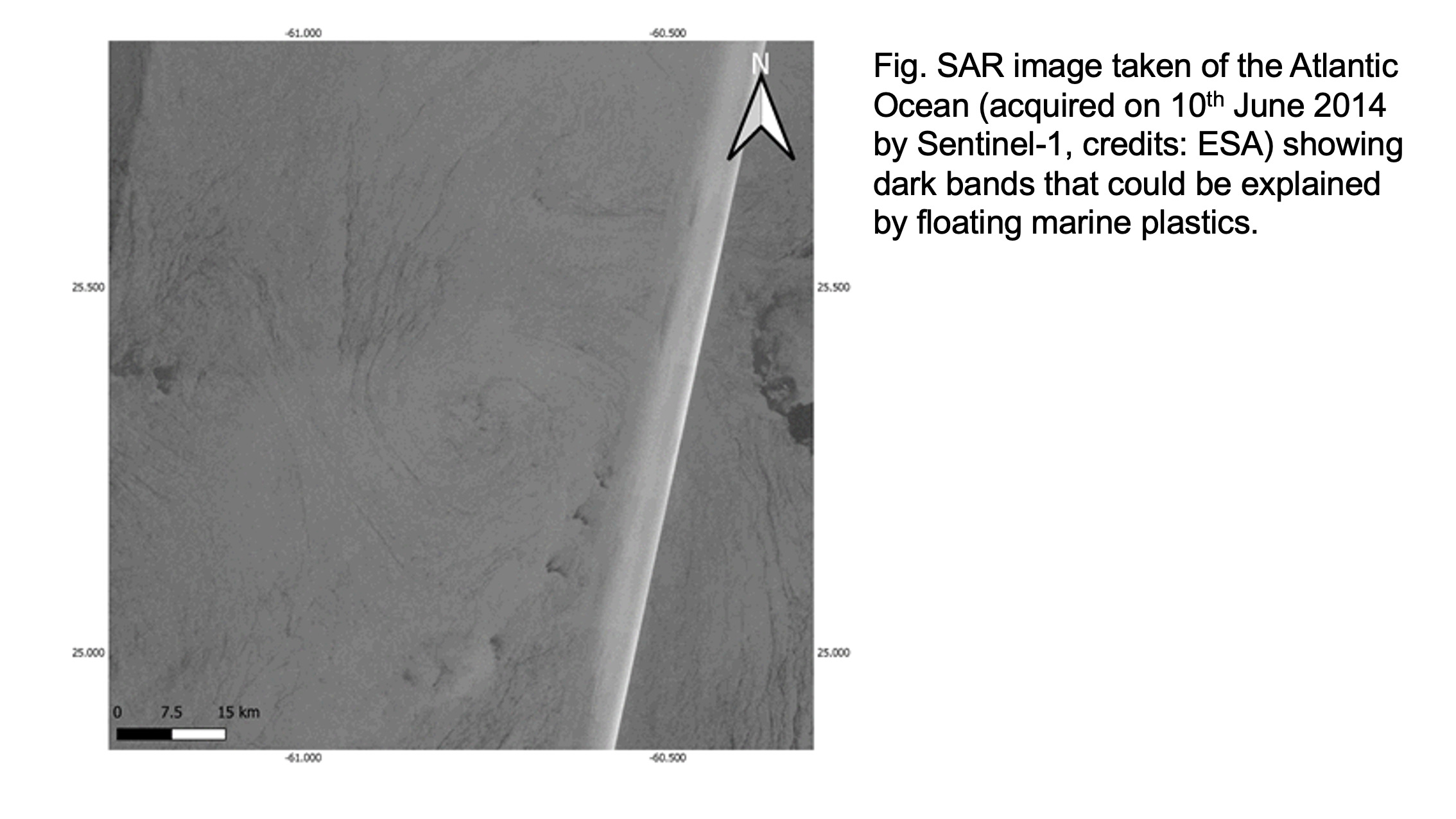Dark bands associated with wave damping can be observed in SAR images of the ocean surface. In some cases, the dampening is associated with algal blooms or oil slicks. However, there are some images where the cause of these dark bands is not clear, as is the case of the project SAR image taken of the Atlantic Ocean (acquired on 10th June 2014 by Sentinel-1, credits: ESA). The accumulation of floating marine pollution, particularly plastic, has been suggested as a candidate mechanism. There is no convincing scientific evidence to either confirm or rule out this hypothesis. This co-funded research examines whether it is theoretically possible for floating marine litter to significantly affect the properties of surface waves, so that its signature can be detected by satellites, a question existing models cannot answer.
The direct analogue of the possible influence of floating plastic pollution upon waves is sea ice, which is well-known to dampen surface waves, changing their amplitude and wavelength, thus enabling their observation by satellites [1,2]. However, the size of plastic particles is generally smaller and more sparsely distributed than floating ice. In unsteady flows, particles with a low Stokes number (non-dimensional size) are advected perfectly by the flow, whereas the inertia of larger particles with a high Stokes number determines their motion. These high-Stokes-number particles can also potentially dampen the motion of the fluid, as there will be a velocity difference between the particles and the fluid and, consequently, a drag force that dissipates energy. Larger particles and a larger concentration increase the dissipation rate.
The co-funded research project develops the first theoretical model (based on [3]) to estimate the minimum concentrations and floating plastic pollution characteristics needed to significantly affect the surface wave field, in turn allowing detection by satellites, using SAR in particular.
[1] Ardhuin, F., Collard F., Chapron B., Girard-Ardhuin F., Guitton G., Mouche A. and Stopa J. E., “Estimates of ocean wave heights and attenuation in sea ice using the SAR wave mode on Sentinel-1 A”, Geophys. Res. Lett., v 42, 2317 (2015). https://doi.org/10.1002/2014GL062940
[2] Gebhardt C., Bidlot J.-R., Gemmrich J., Lehner S., Pleskachevsky A. and Rosenthal W., “Wave observation in the marginal ice zone with the TerraSAR-X satellite”, Ocean Dyn., v 66, 839 (2016). https://doi.org/10.1007/s10236-016-0957-8
[3] Calvert, R., C. Whittaker, M. L. McAllister, A. Raby, A. G. L. Borthwick and T.S. van den Bremer “A mechanism for the increased wave-induced drift of large floating marine litter”. J. of Fluid Mech. (in press).
[4] Sutherland, B. R. and Balmforth, N. J., “Damping of surface waves by floating plastics”, Phys. Rev. Fluids, v. 4, 014804 (2019). https://doi.org/10.1103/PhysRevFluids.4.014804

